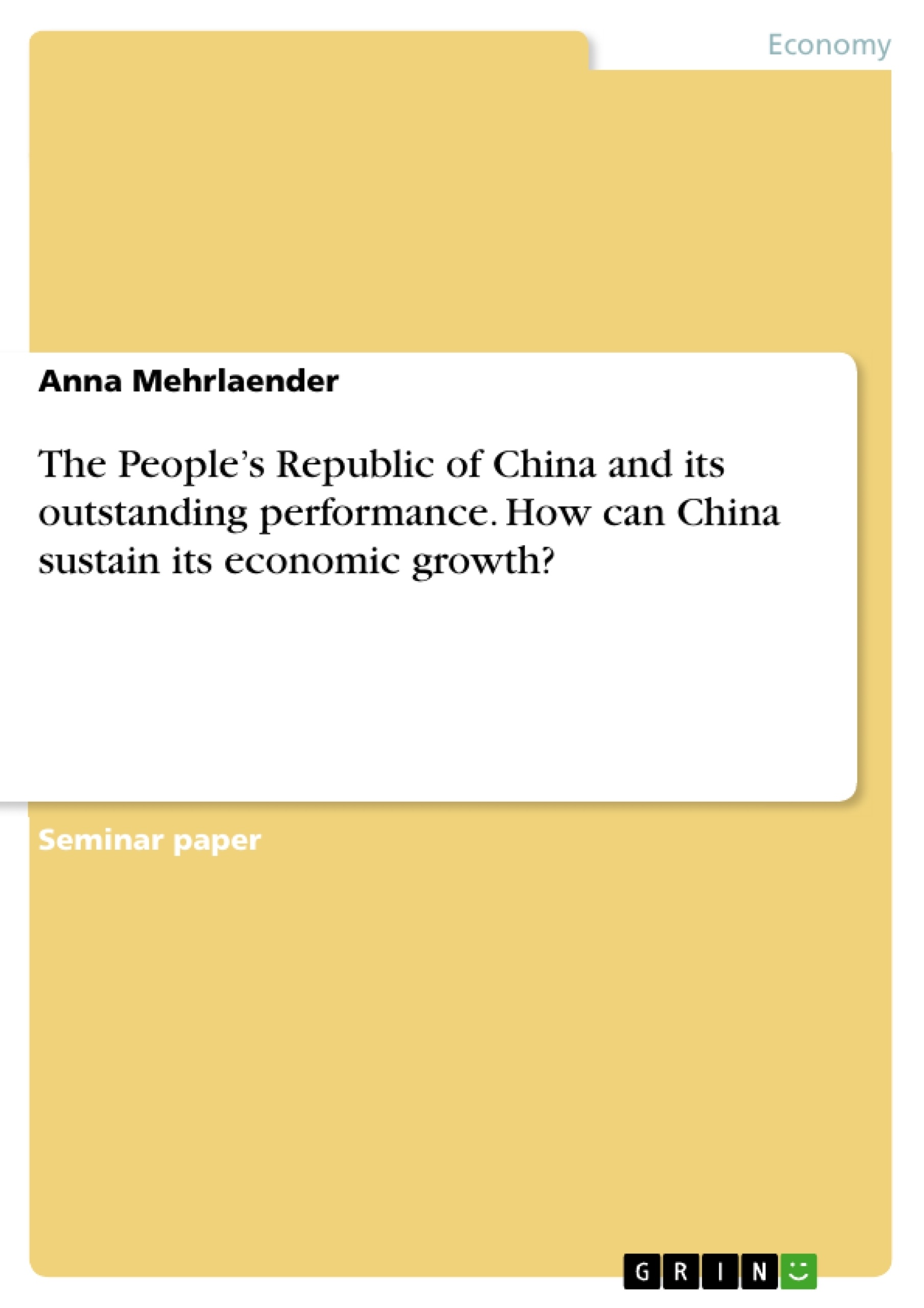This report aims at critically evaluating the political, economic and technological factors that have enabled the People’s Republic of China to become an emerging economy. Furthermore, it examines carefully China's economic growth after opening up the economy in 1979. It considers foreign direct investment in the political, economic and technological sectors and shows its importance to China’s development. Finally, a key learning outcome is what recommendations, for example, future strategic direction, China need to adapt to sustain economic growth?
In 1817 Napoleon Bonaparte said: „When China awakens, the world will tremble“. 200 years later China woke up, went through a remarkable development process and is an outstanding emerging economy today. China is the largest country in the world by population, it has more than 1.3 billion inhabitants and its gross domestic product is steadily increasing. In 2013 it received $117.6 billion in foreign direct investments.
Contents List
1. Introduction
2. Political Factors
2.1 China’s Political Development
2.2 Promulgation of Special Economic Zones
2.3 Foreign Direct Investment Policy
3. Economic Factors
3.1 Foreign Direct Investment
3.2 Trade Liberalization
4. Technological Factors
4.1 Research and Development
5. Conclusion
6. China’s Future Prospects
6.1 Sustaining Economic Growth
6.2 Sustainability and Economic Growth
7. List of References
8. Appendix
-

-

-

-
Upload your own papers! Earn money and win an iPhone X. -

-
Upload your own papers! Earn money and win an iPhone X. -

-
Upload your own papers! Earn money and win an iPhone X. -

-
Upload your own papers! Earn money and win an iPhone X. -

-
Upload your own papers! Earn money and win an iPhone X. -

-
Upload your own papers! Earn money and win an iPhone X.

